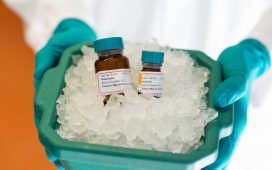The previous two terms of the Narendra Modi government saw the launch of some major national advanced technology missions, including for supercomputing, cyber-physical systems, and quantum technologies. These were coupled with initiatives to boost private sector participation with space and geospatial policies. India became the fourth to have a spacecraft’s lander touch down successfully on the moon. In parallel, there were concerns about the sidelining of basic research and stagnation in research funding as a percentage of the GDP. What then do leading scientists make of the new Budget in Modi’s third term?
N. Kalaiselvi, Director-General, Council of Scientific and Industrial Research:
Continuing with the focus on ‘Viksit Bharat’ like last year, this year’s Union Budget also spurs research and development in important areas such as climate-resilient agriculture, critical minerals, miniature and modular nuclear energy technology, energy-efficient technologies, etc.
Under the Budget priority entitled “Innovation, Research and Development”, the Hon’ble Finance Minister has clearly emphasised basic research and prototype development, including innovation and industry linkages. Expectedly, the space sector has received a massive boost.
In the Budget presentation, the Hon’ble Finance Minister listed nine priorities.
In addition, I see a few other priority areas, such as “Productivity and Resilience in Agriculture”, “Energy Security”, and “Manufacturing and Services”, which provide research and development opportunities, and are also focus areas of CSIR.
The proposed “Critical Minerals Mission” and the exemption of customs duties on 25 critical minerals will significantly boost critical minerals research. Another area of national importance and global relevance is clean energy. Water supply, sewage treatment and solid waste management also figure as priority areas. Incidentally, CSIR is into technology development in all these areas.
In my opinion, the plan for “plug and play” industrial parks in 100 cities and the creation of a dozen industrial parks under the National Industrial Corridor Development Programme will provide significant opportunities for the uptake of indigenous technologies like those from CSIR labs. Importantly, there is a clear focus on commercialising technologies with the involvement of private sector-driven research.
To meet the fund requirements for various R&D activities as mandated by the Government of India, during the Financial Year 2024-25, the Hon’ble Finance Minister has earmarked an allocation of Rs 6323.41 crore for the Department of Scientific and Industrial Research.
The CSIR budget has increased by 10%, above last year’s. We will put in our best efforts to sustain our R&D activities in the allotted budget, and in case of further need, we will approach the Ministry of Finance at the time of revised estimates.
Rajesh Gokhale, Secretary, Department of Biotechnology (DBT):
The Union Budget presented by Hon’ble Finance Minister lays emphasis on transforming agriculture research in the country. The focus is on productivity and climate resilience in agriculture. The DBT established “speed breeding platforms” in the International Rice Research Institute (IRRI) in Varanasi; Punjab Agricultural University, Ludhiana; and the National Agri-Food Biotechnology Institute, Mohali, to shorten the developmental cycles of agricultural crops with improved attributes and climate resilience. Taking the example of rice crop, in field conditions, rice can be grown for a maximum of two to three generations in a year’s time. In a speed breeding facility four to six generations of rice crop is grown in a single year.
Further, several agricultural crop varieties with climate resilient and high productivity traits are being developed through phenotyping and genotyping the genetic resources pertaining to rice, wheat, chickpea, linseed, niger, safflower, sesame, green gram, cowpea, black gram, moth bean, horse gram, and rice bean.
Skilling of human resources to mobilise young minds towards futuristic innovations is also required at doctoral/PhD training [levels], which is traditionally an individual enterprise. The recently launched i3C BRIC-RCB PhD programme, designed to solve national problems through collaborations, espouses multi-disciplinary learning. This will inculcate innovation as well as skilling and create scientists with cross-disciplinary expertise in cutting-edge areas of biosciences and biotechnology.
The angel tax abolition is a major incentive for startups raising private capital. For the high risk biotechnology sector, the angel tax was a discouragement to attract investments. The 2024 Budget announcement will pave the way for investment inflow — a very welcome step for promoting deep-tech life sciences startups that require to raise several small rounds at the pre-product level, which typically is supported by the government, angel investors, and high net-worth individuals.
When seen in conjunction with provisions for FDI promotion in the Budget, this will create a robust pipeline of angel-funded portfolio companies ready to be picked up by VC firms post-BIRAC funding for high-risk and early-stage ideas. [BIRAC is the Biotechnology Industry Research Assistance Council.]

R&D efforts in our country are primarily academia-centric. Most often the innovations that occur at the laboratory level fail to get commercialised. To bridge this gap, R&D efforts in private companies on equal footing is required. In this direction, operationalisation of the Anusandhan National Research Foundation (ANRF) for basic research and prototype development with a corpus of Rs 1 lakh crore will pave the way for private sector-driven research and innovation.
Subhash Lakhotia, Distinguished Professor, Banaras Hindu University:
The actual expenditure of S&T and higher education in 2023-2024 was much less than the initial allocation for that year.
The suggested allocations for 2024-2025 are not very different from that in 2022-2023 because of this reason. They may deceptively appear much greater than last year, but in most cases the increase appears to be less than 10% of that in 2022-2023. This is indeed disappointing since this nominal increase would be, if it is not already, offset by inflation.
Additionally, because of increasing numbers of public and private institutions, the level of competition has substantially increased. Therefore the quantum available per capita would become much less than in 2022-2023. An additional worry is whether the actual available funds would really match the allocated budget. The situation in 2023-2024 provides a red signal!
The ANRF could make a small difference if and when this becomes operational. As of now, it seems to be in limbo!
And I do not think that as a percentage of the GDP, the allocation in this year has shown any increase. Unless that happens, we will continue at the same level or actually go down.
The zero budgeting system (ZBS) and quarterly reports remain problems. Quality basic research projects cannot have a one-to-one correlation between ‘targets planned’ and ‘targets achieved’ because in any research effort, there is a lot that remains unknown. Thus the mandated quarterly reports put unnecessary burden and stress on researchers. It is only when the actual results are different from the expected that a real quantum advance happens.
Tapasya Srivastava, professor, Department of Genetics, University of Delhi South Campus:
The previously announced ANRF is to be made operational with a focus on both basic science research as well as prototype development. The interim budget had already announced a corpus of Rs 1 lakh crore for R&D for innovation, to be led by the private sector. The establishment of a separate venture capital fund for space technology also has the potential to spur startups. However, given the enormous capital requirements of space tech, the allocation of Rs 1000 crore seems inadequate.
The Budget has announced measures to step up clean energy generation, including solar and nuclear energy, with concerted measures such as reducing taxation on critical input raw materials and minerals.
The allocation for the Production Linked Incentive (PLI) scheme for pharmaceuticals increased to Rs 2143 crore; it will help boost domestic pharmaceutical manufacturing. But specific announcements for the health and wellness of the youth along with employment generation would have been welcome.
While the Budget may not have many headline announcements for science conventionally, there are some heartening steps. The stress on employment generation and the internship scheme would undoubtedly help many students of science get into well-known companies. In the long run, this will encourage students to take up science as a career with more opportunities beyond academia.
C.P. Rajendran, National Institute for Advanced Studies:
The government plans to set up a venture capital fund of Rs 1,000 crore to promote space technology. There is also a major push for R&D of new nuclear technology. The government will partner with the private sector to set up small reactors and develop newer technologies for nuclear energy.
The Finance Minister said they will operationalise the ANRF for basic research and prototype development. What is intriguing is the mention of “prototype” development along with “basic research”. Generally, prototype development means the “initial stage of software development” before finally releasing the product in the market or for users. It’s not clear as to what prototype development has to do with research in basic sciences. Does it mean the government is only interested in translational research with technological applications? That goes against the stated objectives of the ANRF. The government should make clear what kind of research they want to fund through ANRF.

The ANRF was purportedly created to prioritise research facilities in universities and colleges. Most of India’s 40,000 higher education centres are run by States and have limited funding opportunities. State establishments get only about 11% of the funds provided by the DST and 65% of funding goes to IITs under the Union Government. The ANRF wants to change this disparity, but what is the mechanism?
Overall, the budget allocation has some nominal increases, nothing exciting. A long-standing demand from the scientific community is to arrange for higher government funding because the private sector has not shown much interest in investing in basic research.
T.V. Padma is a freelance science journalist.











